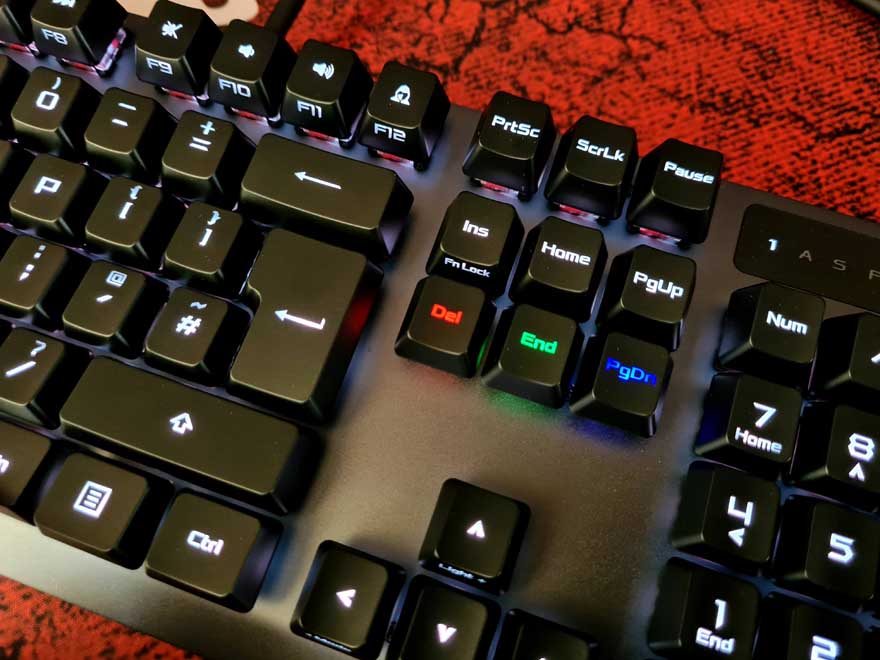ASUS RoG STRIX Scope RX Optical Mechanical Keyboard Review
Peter Donnell / 4 years ago
Performance
Without a doubt, this keyboard looks stunning. However, it looks even more stunning when you plug it in! The RGB is really quite sexy, offering really deep and rich colours rather than just straight out brightness. A lot of that is due to the chassis design, it’s not overly reflective, and quite dark actually. So light does catch it, but it just gives us a softer glow between the keys, and I like that.
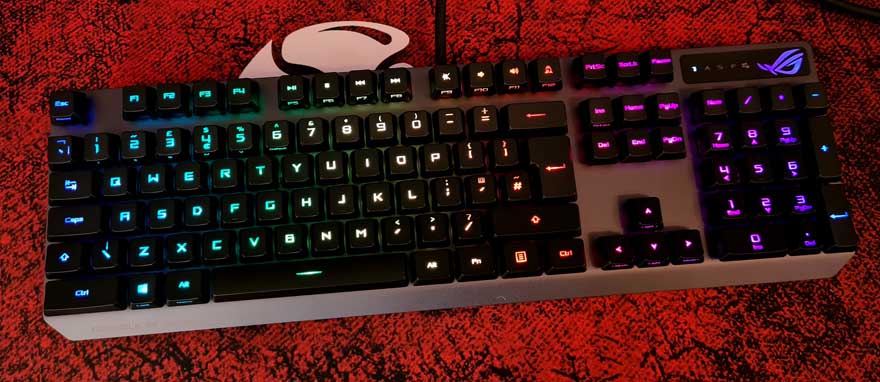
The ASUS eye in the corner looks great too, I like that it’s RGB as it doesn’t throw out the rest of the aesthetics.
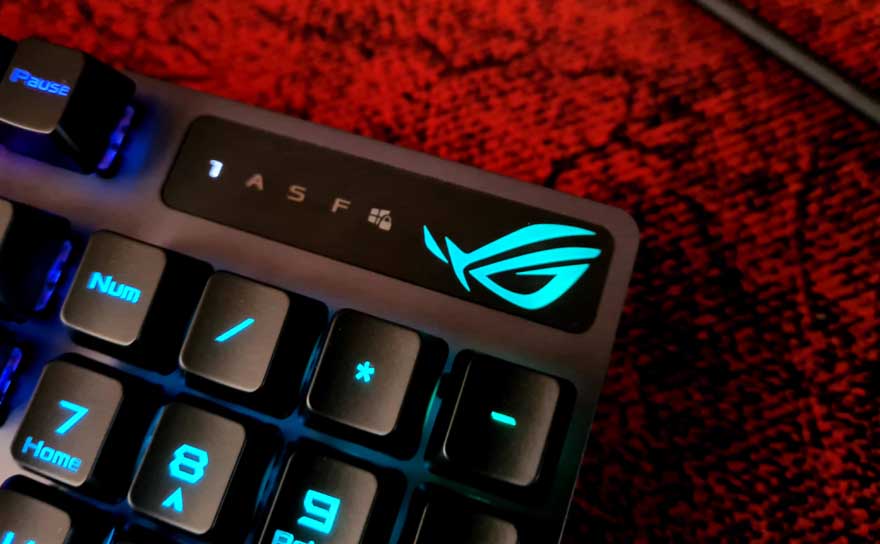
There’s a slight brushed texture to the metal, so it diffused the light really well. It’s a much warmer looking effect and while not as bright, it’s less distracting overall.

The new switches are certainly interesting too. They’re called Red as they’re obviously implying the naming structure from Cherry with their MX Reds. They are a linear switch though and do feel pretty much the same as a Cherry one really. I mean that as a compliment though, they’re really nice switches and you would have to be a bit of a crushing bore to be able to tell any difference from the typing action.
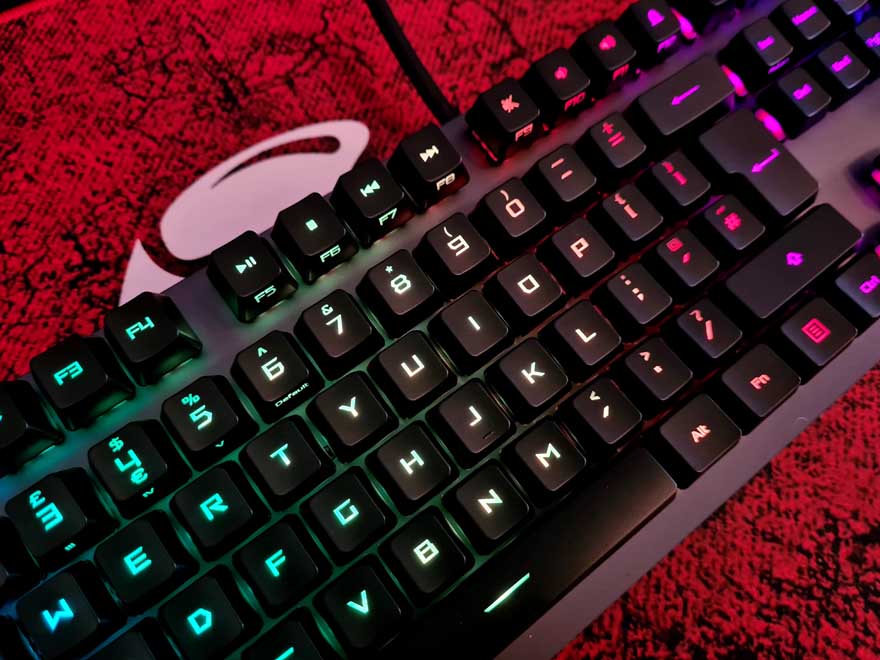
A visual inspection, however, will quickly show you that they are very much not Cherry switches.
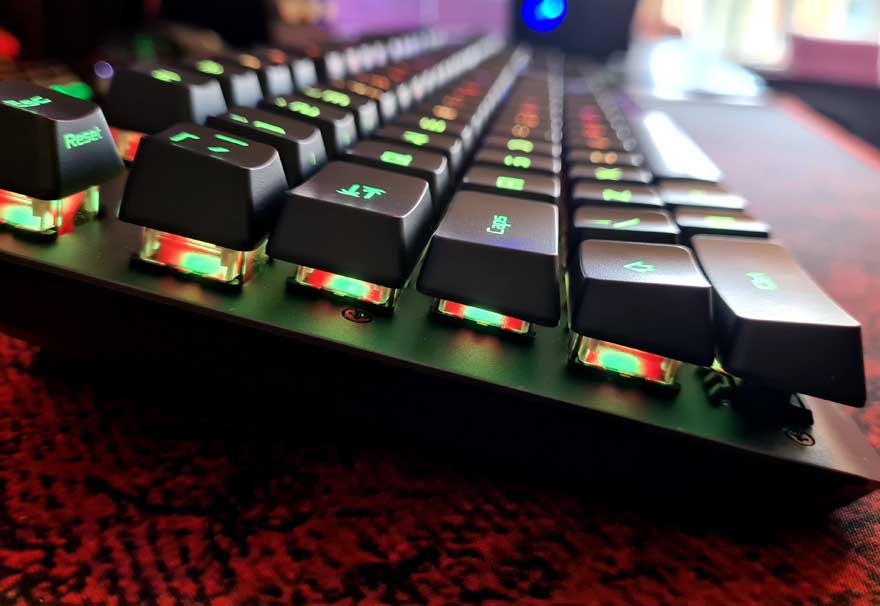
For starters, they don’t use the same mounting system. They use a box mount, much like Kailh have been doing recently. This looks odd, but it means the switch has significantly less wobble from the key cap.
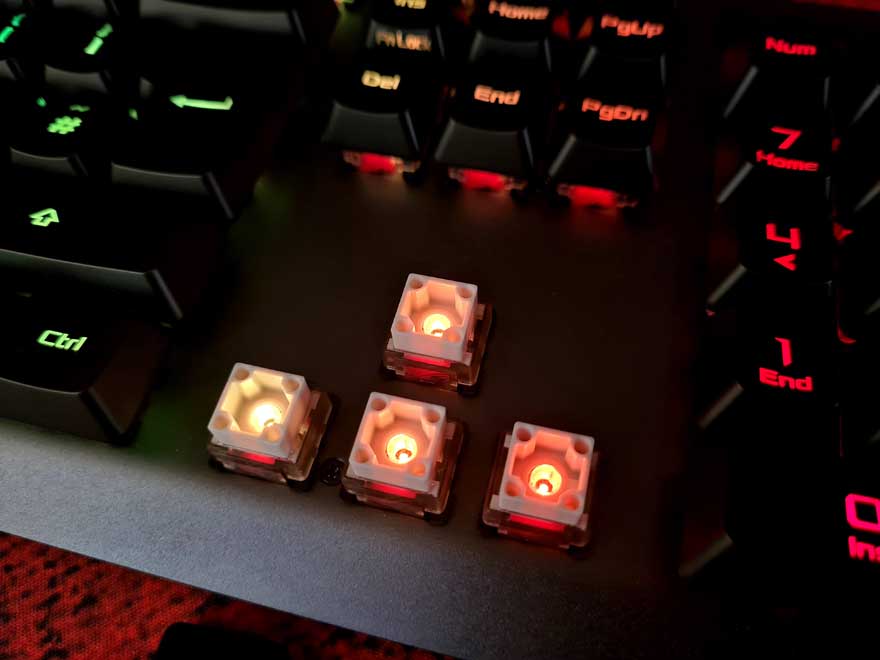
There holes in each corner of the stem from the switch, and as you would expect, four pegs in the key cap for it to sit securely on it. They really do feel rather sturdy and it works wonders for improving the overall feel and responsiveness of the switches.

While the keyboard does offer up a software suite for tinkering with settings, light, macros and all the usual stuff, it does also feature on-board controls too. These are my favourite, as you can cycle through the built-in lighting profiles and brightness levels via the FN-shift button.
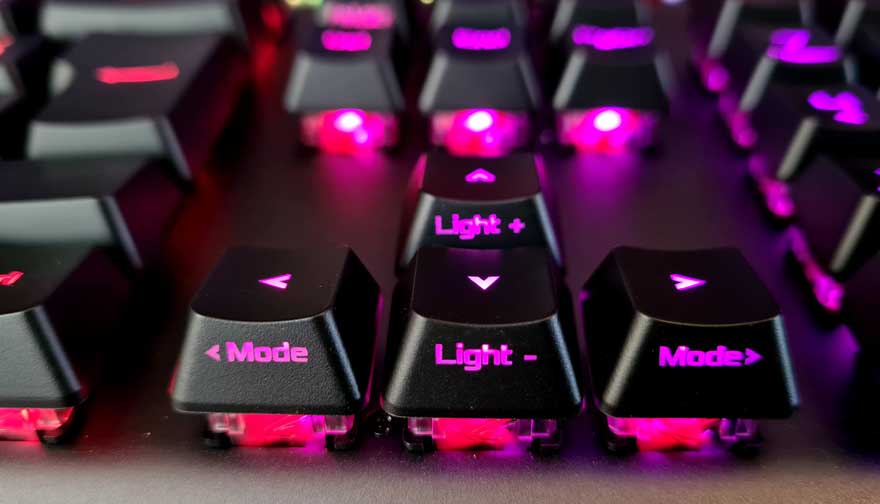
There’s a pretty cool selection too, such as these reactive ones.

A timed fade out reaction, this one is pretty cool to play with.

Stars.
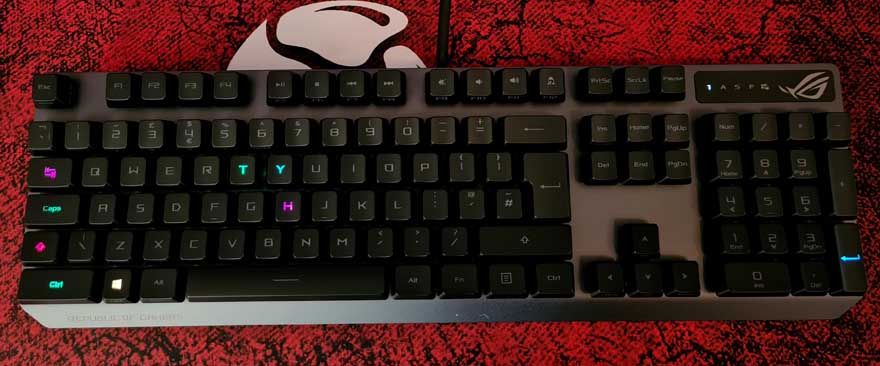
Stripes.

Rain drops.
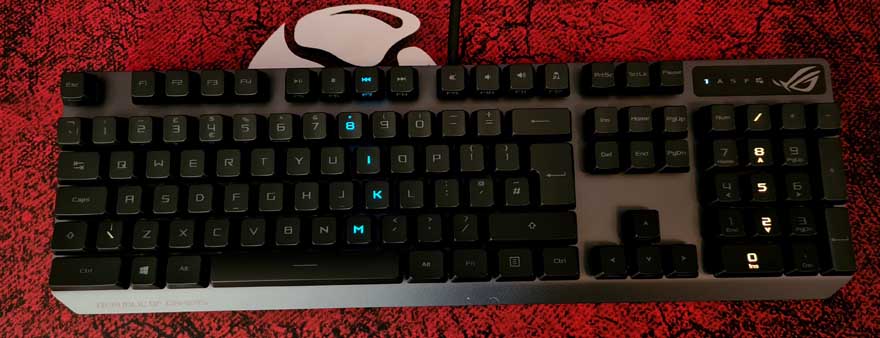
You can even tinker with the colour pallet by mixing the red, green and blue channels via the Del, Eng and PgDn keys. It’s enough to make quick changes at least, and if you did want to do a full per-key setup, the software is all you’ll need; you can save profiles to the keyboard and ditch the software after if you desire.
